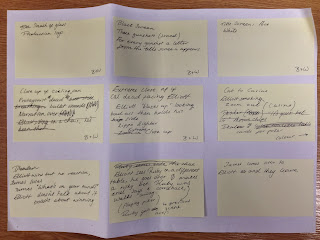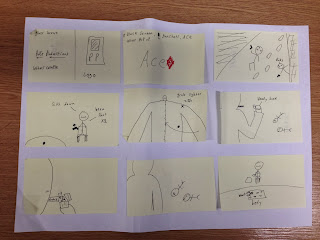
Here is sheet one of our first drawn storyboard showing from
the production logo up to a shot in the final scene. Most of the changes are in
this section here, although they are not so much changes as they are additions
to detail, or entire shots. It includes the production logo, film title, and
the first location of the OTS.

This is the second sheet of our first storyboard which
continues from the last and shows the end of the OTS.